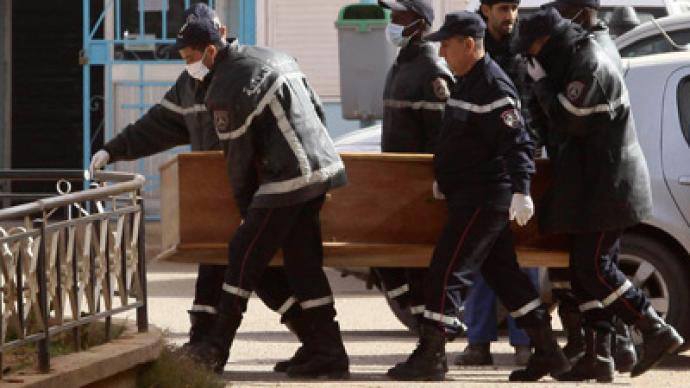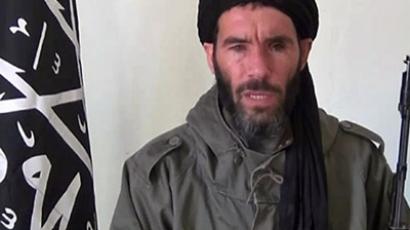‘Used as human shields’: Survivors of Algeria hostage crisis recall brutality and terror

In the wake of Algeria's In Amenas crisis, the hostage death toll rose to almost 60. The survivors have revealed tales of shocking brutality – captives were used as human shields, forced to wear explosive jackets and witness to horrific executions.
On Monday, Algerian Prime Minister Abdelmalek Sellal announced that 37 foreigners of eight nationalities were among those killed.The four-day ordeal at the In Amenas gas plant in the Sahara Desert ended Saturday – several US, British, French, Japanese, Norwegian, Romanian and Algerian workers were reported dead or missing. Many of the survivors have spoken with the press, recounting horrific tales of the abuse and murder of hostages.Philippine survivor Joseph Balmaceda witnessed foreign hostages being used as human shields to protect the militants. He described one Japanese hostage being draped with explosives, while he and others had their hands tied with cables.“Whenever government troops tried to use a helicopter to shoot at the enemy, we were used as human shields," Balmaceda told reporters shortly after he arrived back in Manila. "We were told to raise our hands. The government forces could not shoot at them as long as we were held hostage." Balmaceda was the only survivor of nine hostages aboard a van that was bombed as militants clashed with Algerian security forces.
Militants targeted foreign hostages
Some of the freed workers described how they were forced to wear explosive jackets, and were threatened with being blown up. Others described watching their captors summarily execute hostages.At a press conference on Sunday, the workers gave an account of how nine Japanese hostages were murdered. Witnesses said the first three were killed as they tried to escape from a bus taking them to the airport. "We were all afraid when we heard bursts of gunfire at 5:30am (04:30 GMT) on Wednesday, after we realized that they had just killed our Japanese colleagues who tried to flee from the bus," AFP reported, quoting Riad, an Algerian national working for Japanese engineering firm JGC Corp.Earlier reports claimed that one Brit and one Algerian were killed on the bus during the militants' initial assault. The gunmen then took the other bus passengers to the plant's residential compound, where they had taken hundreds of hostages, one witness explained. "A terrorist shouted 'open the door!' with a strong north American accent, and opened fire. Two other Japanese died then and we found four other Japanese bodies in the compound,” Riad added, his voice choked with emotion.During the hostage crisis, Algerian workers were held separately from the foreign nationals. According to witnesses, they were treated well, and the militants said they were not interested in killing non-Christians; eventually, they were allowed to leave."I was allowed to go, but before I did, I saw many Brits killed," an unidentified man told reporters. "One Westerner trying to give first aid was blown up by the terrorists."Another unnamed witness who said he worked as an engineer told the French press that the militants were shouting: “We’re only looking for foreigners, you Algerians can go!” Some workers managed to flee the complex by cutting a hole through a metal fence, according to media reportsA 57-year-old Norwegian man was reportedly among the 50 people who escaped through the fence. He told the press that he and the others had to walk for 15 hours through the desert, braving exhaustion and severe dehydration, before reaching the nearest town of In Amenas. Another survivor, an Algerian driver identified as 'Brahim,' also escaped through the fence. He found refuge almost immediately when he stumbled onto the Algerian army."As bullets rang nonstop, we cut holes in the metal fence with large clippers, and once through, we all started running," Brahim said. "We were quickly taken in by the special forces stationed just a dozen meters from the base. I didn't look back."
Death toll climbs
On Monday, the bodies of two Canadians were discovered among the Islamists killed during the hostage crisis, after having been recovered from the site, Algerian private TV station Ennahar reported. Reuters also reported that nine Japanese nationals were killed during the four-day siege.A raid by the Algerian military on Saturday ended the hostage crisis, with initial reports that at least 25 foreigners and Algerians had been killed, along with 32 of the kidnappers. The death toll was later raised to at least 89.At least one of the militants responsible for the kidnapping was supposedly a French national, but Paris could not verify the claim, France24 reported. If true, the allegation would reinforce earlier reports by some of the surviving hostages, who claimed to have heard militants speaking French and English, in addition to Arabic. Some of the hostages also said that the militants were able to easily navigate the facility, and knew its internal procedures and the room numbers of the foreign workers. "They had accomplices on the inside," Riad said.Earlier, the militants said the attack on the plant had been planned for two months, Mauritania's ANI news agency reported.














